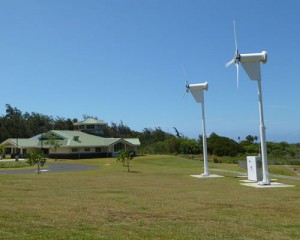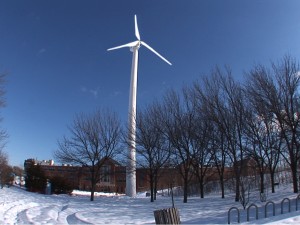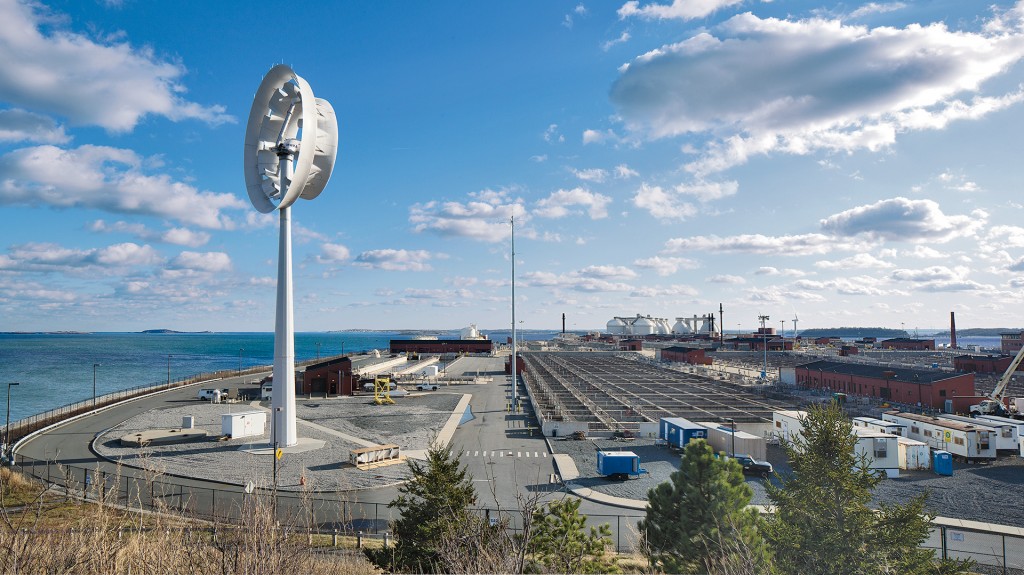Driven by volatile electricity prices, the threat of expiring tax credits, and a strong year for farmers, the U.S. distributed wind energy industry saw a significant addition to its capacity in 2012, reveals the Department of Energy’s “2012 Market Report on Wind Technologies in Distributed Applications.”
Distributed wind capacity installed in the U.S. last year was 62 percent higher than in 2011, with 175 MW deployed, 3,800 wind turbines installed, and $410 million in domestic funds invested. (For context, consider that total funding into the entire wind sector in the second quarter of 2013 alone was $3.5 billion, according to a Mercom Capital Group report. Venture capital funding accounted for $210 million of this second-quarter wind-sector funding.)
Distributed wind applications are defined as those that are installed near the point of end-use—the categorization does not involve turbine or project size. Turbines for distributed wind systems are commonly installed on residential, agricultural, commercial, industrial, and community properties. These systems are distinct from utility-scale turbines installed on wind farms, which generate wholesale power and send it to substations via transmission lines.

Two 6kW wind turbines power the North Kohala Public Library.
The distributed wind market—also called “small wind” because of these systems’ relatively modest scale compared with wind farms—may stand to continue its steady pace of growth now that a newly formed company called United Wind has announced that it will be introducing a wind leading program for turbines 10 kW and higher, which it will be pitching to large residences, schools, businesses, and farmers, says SustainableBusiness.com. Given the success of the model in the solar industry, some expect that a boost to distributed wind could result.
United Wind was formed this year through the merger of Brooklyn-based wind data provider Wind Analytics and Talco Electronics, a distributor and installer of wind turbines.
Major VC investors like Victor Westerlind of RockPort Capital Partners and Peter Grubstein of NGEN Partners have said that they consider wind turbine technology specifically tailored for the distributed wind space to be a worthy investment opportunity. In recent years, the technology demand within this space is skewing bigger. In 2011, small turbines (that is, those up to 100kW in size) comprised 70 percent of all installed U.S. wind units, and last year, they represented only 40 percent of all units installed, says the DOE report. During that time, the number of mid-size turbines (101 kW to 1 MW in size) installed in the U.S. jumped by more than 250 percent, and the number of utility-scale turbines (greater than 1 MW) rose by almost 100 percent. As a result, the capacity-weighted average size of wind turbines used in distributed wind applications increased by more than 300 percent between 2011 and 2012, with the typical U.S. turbine growing from 15 kW to 47 kW.

McGlynn School wind turbine in Medford, Mass.
The states that recorded the most installed distributed wind power capacity in 2012 varied in terms of both size and region: they were Iowa, with 37 MW installed; Massachusetts, with 27 MW; California, with 23 MW; and Wisconsin, with 18 MW. Over the past 10 years, Texas, Minnesota, Iowa, California and Massachusetts were the leaders in this space. Given that the distributed wind market is strongly subject to federal, state, and local policies and incentives, it’s hardly surprising that Iowa, Massachusetts and Texas were among the top five states in the country in terms of federal, state, and local funding awarded to the distributed wind in 2012.
The report concludes that distributed wind capacity is likely to further increase in 2013, thanks to the development of alternative financing models and other factors, but adds that “considerable barriers and challenges” include the still-sluggish U.S. economy, fickle and inconsistent government incentives, and low solar photovoltaic and natural gas prices, all of which could serve to curtail the distributed wind industry’s growth.
One company that’s angling to capitalize on the growth of distributed wind is Waltham, Massachusetts-based FloDesign (soon changing its name to Ogin), which manufactures wind turbines that are particularly well suited for this “small wind” application, according to a profile on the company in Fast Company. FloDesign has attracted investments from the VC arms of BASF Chemical and Dow Chemical as well as major VC firms Kleiner Perkins Caufield & Byers and VantagePoint Venture Partners.

FloDesign test wind turbine in Boston Harbor
To read the full DOE report, click here
To read the Fast Company article cited in this story, click here
To read the Sustainable Business article cited in this story, click here